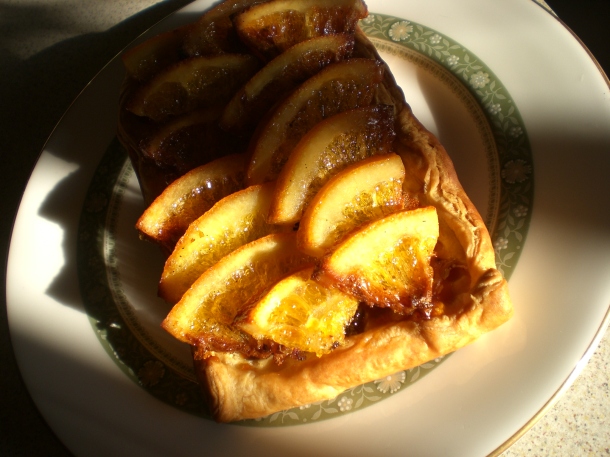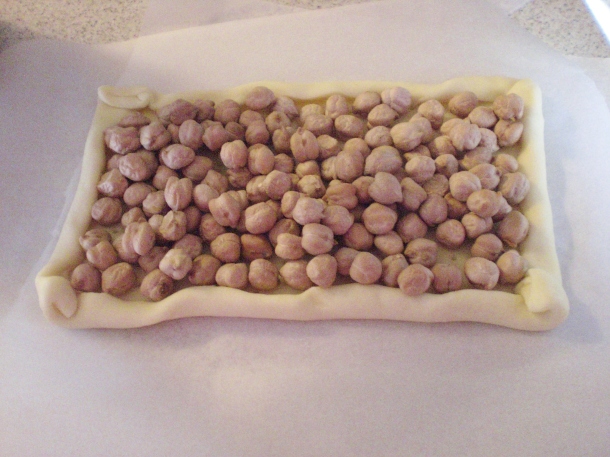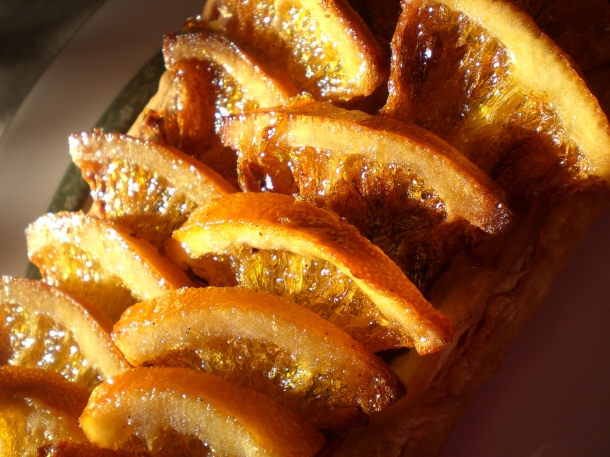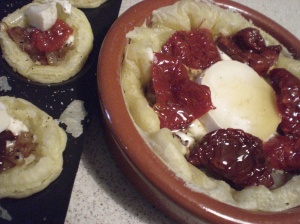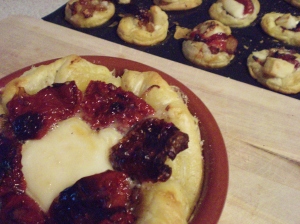One French Word: tartelette, a French recipe: tartelettes à l’orange
When I first worked in Paris, rue de la Glacière in the 13th arrondissement to be precise, and to be even more precise, this was almost 50 years ago, there was a pâtisserie diagonally across the road from my office. I discovered orange tarts there, and it soon became an afternoon ritual to pop out and indulge myself at tea-time! It says a lot about the relaxed working atmosphere in France at the time, that it was not considered at all unusual to leave the workplace to buy a little something to eat at (almost) any time of day.
The French language bit:
tartelette (feminine noun), une tartelette, la tartelette, les tartelettes = little tarts (of the pâtisserie kind of course!)
We looked at diminutives a couple of weeks ago, here’s another one. Une tarte is a tart, une tartelette is a little tart, a tartlet, an individual portion.
And an expression: Ce n’est pas de la tarte = (roughly) it isn’t a piece of cake, it isn’t simple
Oranges are in season in France, they are juicy and full of flavour. Here is a recipe which is a little bit different, and which could quite well grace your table around Christmas time. I advise you to take the trouble to do individual “slices”, that is, to make une tartelette for each of your family members or guests. One large tart is so difficult to cut, the orange doesn’t come apart willingly, and you are likely to mess up all your hard work.
Buy your oranges untreated if possible. In any case, wash them thoroughly because you will be using the skins. Use freshly bought oranges, not ones that have been sitting forlornly in your fruitbowl for a couple of weeks (or more…).
Ingredients per person:
- 1 orange
- A rectangle of good quality puff pastry, made with pure butter 12cm x 20cm (about 5″ x 8″). This sounds a lot but you will be rolling the edges inwards to form a ridge all the way round.
- 1tbs of your favourite orange marmelade
- 1tbs crème pâtissière (optional but moister, see recipe below)
- 100gr sugar and a wineglass of water
Preparation:
To prepare the orange pieces:
- Wash the orange and cut into fine slices (about 3mm). Recuperate the juice. Cut each slice carefully into four quarters without tearing. It doesn’t really matter if your slices become irregular towards the end of the orange!
- Boil up the sugar with any orange juice and the water to make a syrup, put the orange pieces into this syrup, lower the heat and simmer gently, stirring regularly to ensure even coverage of the pieces, for 15 minutes or so. Do watch them so that they do not burn. They should be soft and translucent, and almost all of the syrup should have gone.
- Place the orange slices with tongs on a baking sheet lined with greaseproof paper to dry a little in the pre-heating oven. It doesn’t matter if they start to colour. Just 5 minutes. Don’t let them dry too much or they will become stiff and crunchy.
To prepare the tarts for the oven:
- Preheat the oven to 160°C.
- Cut the rectangles of puff pastry, roll the edges to form a ridge, prick with a fork, brush the edges with an egg yolk beaten with a little milk, fill with dried peas or beans and cook blind for 8-10 minutes. There is a very fine line between undercooking (the underside is not completely cooked) and overcooking (the pastry is as hard as a board). Better slightly on the undercooked side, in my opinion.
- Remove from the oven, take out the beans or peas, when cool spread the bottom of the tartlet with 1tbs marmelade, then a thin layer (about 3/4cm, 1/4″) of crème pâtissière if you are using it.
- Finish with a layer of orange slices, placed in an attractive pattern like little fans.
For the optional crème pâtissière (makes about 500ml (1 pint), so do divide the ingredients according to the number of people you are feeding.
- 500ml (1 pint) milk
- 2 eggs
- 50gr corn starch
- 60gr granulated sugar
- 1tsp freshly grated orange rind
- 1tsp vanilla powder
Place all the ingredients in a mixer and mix for 4 minutes. Pour into a saucepan and heat over a moderate flame, never ceasing to stir, until the mixture thickens. A WARNING: if you heat too fast, or stop stirring, your eggs will scramble and you can start all over again. When the mixture coats a spoon thickly, remove from the heat and allow to cool.
This cream can be used to stuff éclairs, sponge cakes or as an ingredient of ice cream. I found this recipe, which is much quicker than other recipes for crème pâtissière, here (the site is of course in French).
Now, I didn’t use crème pâtissière, and the result was delicious, but it is definitely moister if one does add a small tablespoonful under the orange slices. The choice shall be yours!
Bon appétit!
